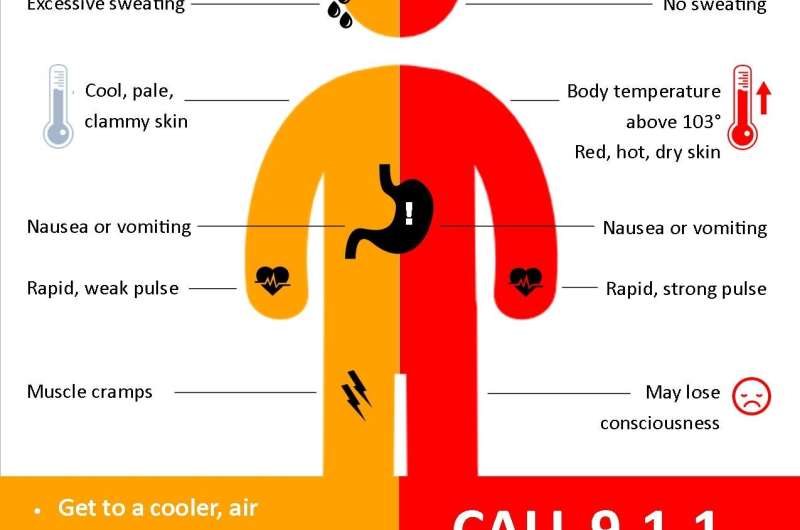Stay hydrated: It's going to be a long, hot July for much of the U.S.

Cue the ice cubes: NOAA forecasters are predicting the current heat wave will continue to engulf parts of the Desert Southwest, the entire Southeast to the East Coast, and the Central and Southern Plains over the next seven days … and likely longer.
As of July 10, about 70 million people are under an excessive heat watch or warning, or heat advisory—and that number is expected to increase each day through July 17. Hot and humid conditions are likely to persist with much-above-normal temperatures predicted for much of the country during the last two weeks of July.
Heat waves can be deadly. Heat is one of the leading weather-related killers in the United States, with hundreds of deaths each year and even more people sickened by heat-related illness.
- Before stepping out the door, know the signs and symptoms of heatstroke (a medical emergency) versus heat exhaustion.
- Check the latest weather forecast and heat indices for the coming days. The Heat Index is what the temperature feels like to the human body and not necessarily what the thermometer says. It is measured by combining relative humidity with the air temperature. Note: Because the heat index was created for shady, lightly windy conditions, being in full sunshine can make it feel up to 15 degrees F higher than the day's forecasted heat index.
- Review these tips on actions to take in during extreme heat events. *Remember, it is never safe to leave a child, older person or pet in a parked vehicle alone because the inside of a vehicle can get dangerously—and lethally—hot. Please: Always check the backseat.



















